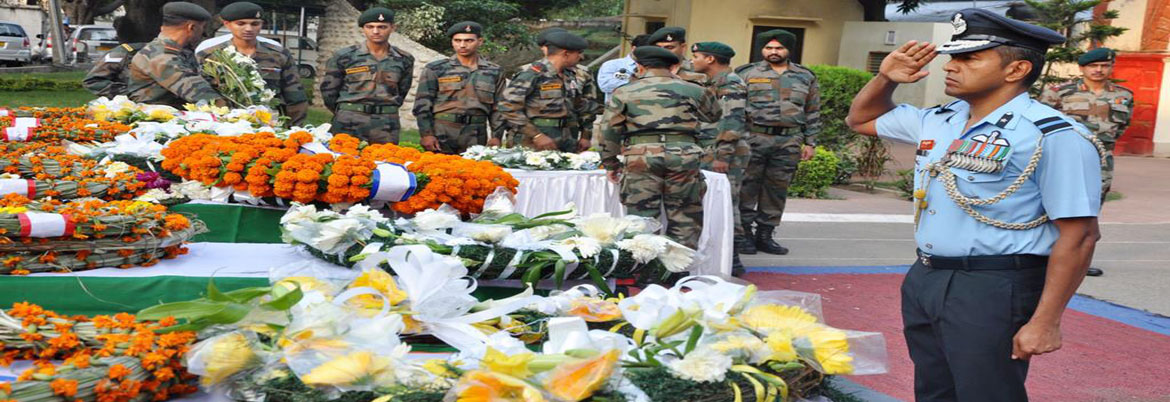Operation Hot Pursuit
- In Military & Strategic Affairs
- 06:42 PM, Jun 11, 2015
- Ramaharitha Pusarla
Incontestably the decisive leadership touted by Modi has showed itself and displayed its true meaning. Iron will and steely nerves have sent strong message across to our hawkish neighbouring nations that India is all set to shed its soft state status and is ready to demolish terror threats from its roots. The retaliatory surgical strikes carried out by the Indian Army in response to the militant attacks on 6 dogra regiment, has earned a new admiration for their resoluteness and clinical precision. In less than 100 hours of the martyring of Indian soldiers in Manipur, The Indian Army swung into action and pounced on the camps of the militants nestled in the thick forests across the Myanmar borders.
While this may not be the first operation of its kind but the alacrity, determination and public announcement of the daring operation made India very proud. Indeed this could be the best ever homage paid to the lives of the 30 armed personnel who sacrificed their lives over the past couple of months including the 18 in Manipur. The unprecedented and extremely bold step which resulted in the annihilation of the two rebel camps has been highly lauded across the Indian nation. What is so admirable in this whole operation is that the Indian side didn’t suffer any casualty but more than 50 insurgents were killed in coordinated strikes carried out by the Army and ably supported by the Indian Air Force armed with Russian built Mi-35 attack helicopters.
The slain militants belonged to the National Socialist Council of Nagaland, Khaplang NSCN (K) and Kangalei Yawol Kanna Lup (KYKL) outfits. The Army also carried out a similar operation across the Nagaland border killing about 15 militants. These kinds of aggressive attacks would in fact embolden the spirit of the Military and Paramilitary forces protecting our borders.
The Indian Army General Dalbir Singh Suhag not only reinforced that the Indian Army was strong and capable to handle any threat but in a break from protocol went public that he was elated by the bold decision taken by the political leadership at the helm of affairs. The Indian government has announced its stand in pre-empting and hunting down the terror threats moving forward. The doctrine of pre-emption is followed by the US and Israel whereby these countries disregard the constraints of national borders to crush terror outfits and support systems that find safe havens from state and non-state actors.
During this daring operation, elite Para commandos crawled several hundred meters into the thick forests guided by high altitude drones and aided with ground Intelligence reports. The Special Forces unit (para 21) carried out operations at Tuensang in Nagaland and Ukhrul in Manipur along the Indo-Burma border. The last joint Indo-Burmese joint military attack was in 1995 in which around 200 militants were blocked and around 38 killed in that process. It took almost 20 years for a very strong doctrine to develop in India.
The New Indian Government’s Zero-tolerance doctrine on terror threats was beginning to become visible in the disproportionate response given by the Indian Army and BSF to the provocations witnessed along the western border in 2014 and early 2015. The Army top brass opined that the kind of response and the timing of retaliatory strike reflect the determination of the country to deter the attacks and engaged in heavy bombardment of the Pakistani posts that were indulging in indiscriminate firing across the LOC.
In fact no other country in the World has suffered so much humiliation across the International border like India. In spite of the dastardly attack of 26/11, India held onto its nerves and shied away from bringing down Pakistan to its heels. Pakistan still continues to brazenly attack India covertly and the perpetrators of the brutal attack in Mumbai continue to roam around freely in NWFP and elsewhere.
Operation hot pursuit is a befitting reply to all the countries which are hitching plans to arm and patronise insurgency as an extension of their state policy. Quite characteristic of a soft state, till now India never embarked on the path of offensive combat and was complacent in submitting a series of dossiers and pleas at various International fora. Rattled Pakistani officials warned India of adventurism exposing their despicable pathological hatred of India.
The brilliantly executed operation was also a strict warning to Chinese PLA which had arranged for the meeting of the insurgent groups a few months ago. The insurgents though not known for their ideological commitment were believed to have been lured by treasures and retirement perks (perhaps a nice property in Xinyang province). PLA officials who were following the surgical strike and its aftermath retorted instantly to an Indian newspaper and send out a rejoinder that it was impossible for the Chinese to abet Indian rebels more so now after PM Narendra Modi’s recent visit to Beijing. The Chinese foreign ministry refused to comment but some seeds were beginning to flower and the Chinese knew what they had sown. The Indian officials meanwhile claimed that they had recorded phone conversations between a PLA official and an NSCN-K leader.
Operation Hot Pursuit not only reinvigorated Indian soldiers whose potential in warfare has time and again been proven but also demonstrated that lack of strong political will to crush the insurgent groups had led to their proliferation in the first place for over 4 decades.
Towards this end India can make greater gains in the future by strategically cooperating with Myanmar, Bhutan and Bangladesh in checking the movement of the insurgents across the porous borders. Beyond any iota of doubt, operation hot pursuit endorses the fact that Modi is determined to obliterate terror camps and their support ecosystems.
Modi knows that India has not gone to War but War has always come to India.







Comments